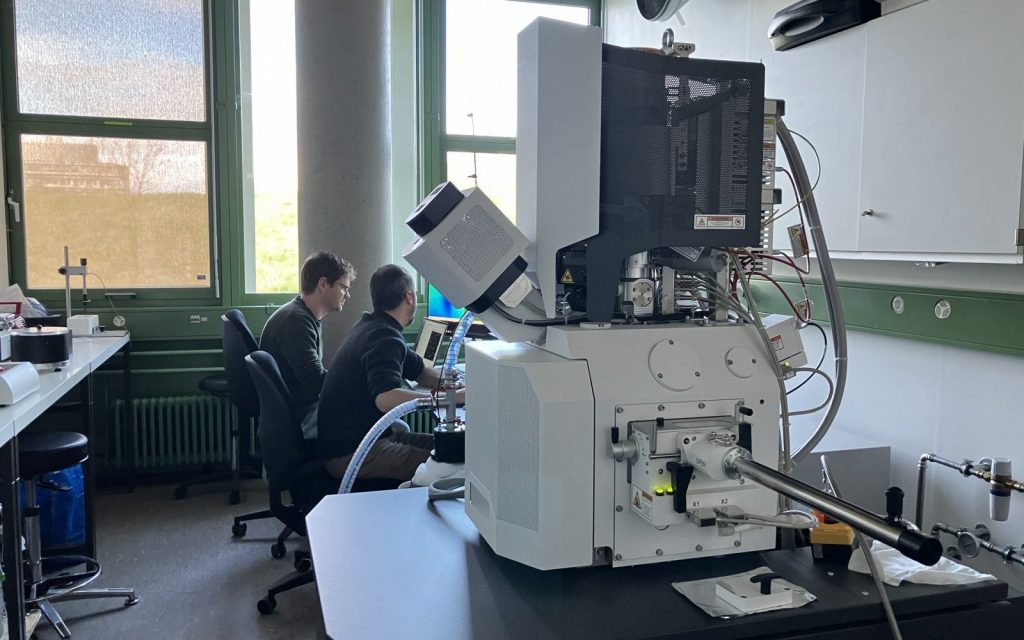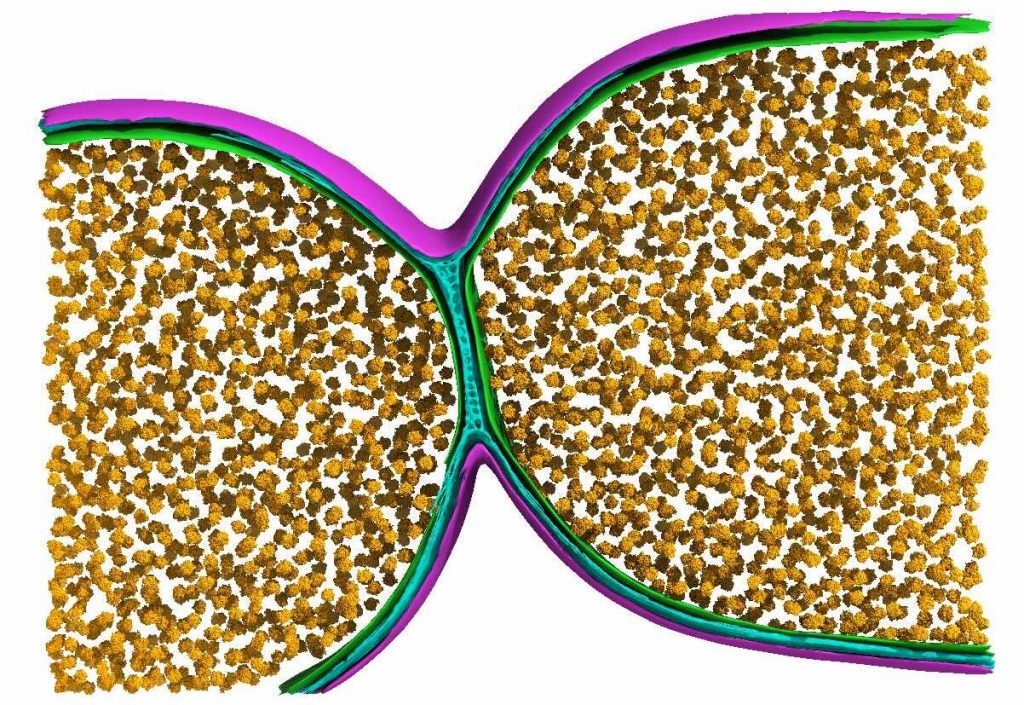Cryo-electron tomography
Understanding of the 3D organization of cellular structure and biomolecules in situ is key to decipher their function in the cell. Cryo-electron tomography is a structural biology method that applied to living systems can determine the molecular architecture of cellular components and macromolecules in their native biological context. We apply and advance cryo-electron tomography technologies to image cellular samples.

Bacterial cell biology

Navarro et al., 2022
Bacterial cells display a variety of division and growing modes. We are interested in understanding the molecular mechanisms governing bacterial morphogenesis. To do that we apply an integrative approach combining our star technique cryo-electron tomography with bacterial genetics, molecular biology methods and other integrative imaging techniques.
Image processing
We implement and develop computational tools for cryo-electron tomographic data processing and subtomogram averaging. Our goal is to build computational strategies for quantitative analysis and in situ structure determination. To do that we contribute to the software package Dynamo for subtomogram averaging developed by Daniel Castaño’s lab.

